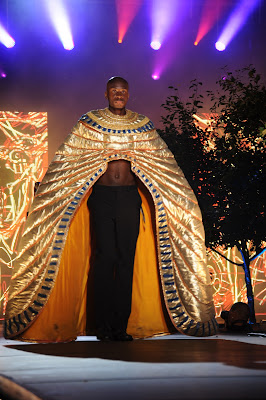Following the interview, we talk about an event held at Cinema du Parc, in support of Jafar Panahi.
The film's story is about a family whose 3 members are suffering from the current situation, in their own way. Yalda is lame and walks with a crutch. She cannot withstand people's look in public and sometimes faints. Thus she imprisons herself in house and obsessively washes and dries her crystal figurines who are the friends of her lonely hours. Ehsan, her brother, works in a warehouse which gradually eats his soul. The only thing that slows this down is relieving himself by writing and going to cinema. Ehsan is mesmerized by the magic of cinema. The mother is worker in a factory. Worried about her daughter's future, she works overtime to send her to a class to learn embroidery; she sells cosmetics to finance a new set of furniture for the day a suitor comes to seek her daughter's hand. Struggling to survive and dreaming are the main subjects of the movie.
"Here without me" was shown in Montreal's 35th world film festival. "Fatemeh Motamed Arya", was awarded the best actress for her role in this movie. Following comes an interview I had with "Bahram Tavakoli", the film's director.
Acey:When is this story happening and where does it take place?
Bahram Tavakoli: Without any precision on the time and place, the story happens in the contemporary time in Iran. In fact it's an adaptation of "the glass menagerie", a play by Tennessee Williams.
Acey: The reason I'm asking you this question is because the atmosphere in Tehran is different from other cities, particularly small cities. Do you think this story can happen anywhere in Iran?
Bahram Tavakoli:Obviously Tehran has different social classes and these social classes don't have the same cultural level, not only in Tehran but also in other big cities. In Tehran you can surely find families from a different social class than this family; however economically, this family belongs to a poor working class whereas it had previously lived a better life. My focus was on this class of Tehran society but as I said it can be from any other cities considering their different cultural backgrounds.
Acey: When Reza, Ehsan's brother, shows his fiancée's photo to Yalda, he tells her that they're getting married in a month. What we see in the movie, is that Yalda gets upset and Reza suddenly leaves their home. This leads the film into a new phase: Yalda stops eating while awaiting a telephone call from Reza like a lunatic. I, like Yalda's mother and brother thought that Yalda has gone out of her mind. Is this what you intended to make in the viewer's mind?
Bahram Tavakoli: From a certain point in the movie, where Yalda claims that Reza had called her, the film falls into a suspension, meaning you can't make a definite decision on the process; something which also existed in the play by Tennessee Williams and we tried to dramatize it visually so that you wouldn't be able to distinguish between a dream and reality. This was one of the things we tried to do because in my opinion, one of the distinguished ideas of "glass menagerie" was to take you away into a magic realism. You are not able to discriminate between reality, dream or others' nightmare and you mentioned it precisely, it all starts exactly from that telephone call. Until that point, everything is realistic. After that you experience a feeling when you see nightmare. Even watching good happenings, doesn't make you convinced that they are really happening.
Acey: I think the cultural atmosphere in Tennessee Williams' play is very different from your film. How did you handle this difference?
Bahram Tavakoli: This is a typical feature in any adaptation. Obviously you lose some details which you need to fill with other elements. Some facets can be culturally translated such as the type of intellectualism in Amanda which of course isn't logical when it comes to a family from working class in Iran and so should be translated differently. Another example is the relationship between a man and a woman. There are other instances too. This film doesn't claim and doesn't want to portray all the features in "glass menagerie". This is an Iranian look towards this play. We tried to portray people in today's Iran, in the role of the main characters, regardless of how well they conform to the characters of the original play; of course at some points, they don't.
Acey: So what happens between Yalda and Reza, is not a coincidence; you actually intended to point out a societal reality which is rooted in our culture, is that right?
Bahram Tavakoli: Drama is nothing more than actions and reactions between the characters. Naturally, these actions and reactions conform to their culture and so in this movie, they conform to today's Iranian culture. (bestare farhangi)
Acey : In all unlikelihood, Reza breaks up with his fiancée and asks Yalda's mother and brother for her hand. If he wanted to do so, why did he show Yalda his fiancée's photo at first place?
Bahram Tavakoli: It's obvious that from a point, the film is not realistic. After the suicide scene, all we see is the son's dream and the last scene of the movie clearly shows this. If you want to see those scenes as realistic, for sure you will have this question. I hope with the cinematic marks and the last scene of the movie, viewers wouldn't have realistic interpretations .
Acey: So far, which movie or movies in Montreal's world film festival has caught your attention?
Bahram Tavakoli: I liked Artist, a French film which was silent. There was also an Argentinian comedy which I liked very much.
Acey: Thanks for your time
Bahram Tavakoli: thanks to you.

















































